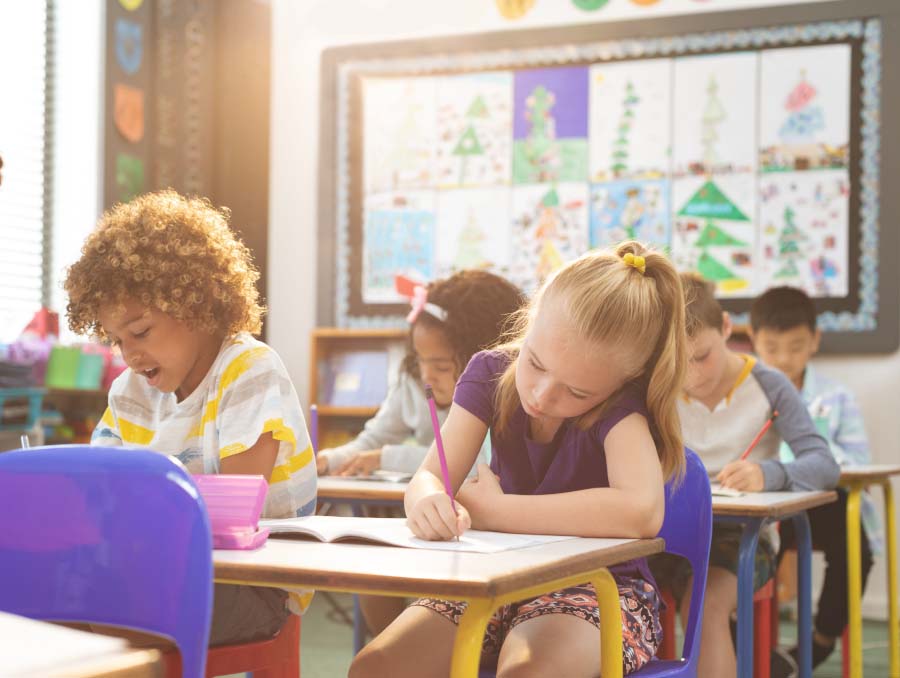Slp in Education stands for Speech-Language Pathology, which is a field that addresses communication and swallowing disorders in individuals. Slp professionals work with students to improve their speech, language, and communication skills, allowing them to succeed in both academic and social settings.
By offering assessment, therapy, and support, Slp plays a crucial role in ensuring students can effectively communicate, express themselves, and participate fully in educational activities. With their expertise, SLPs help students overcome difficulties related to speech sound production, language comprehension, social interaction, and literacy.
Their work involves a range of techniques and strategies, including therapeutic exercises, assistive technology, and collaboration with other professionals to provide the best possible support and intervention for students with communication challenges.
Ensuring Accessibility In Education
Creating a communication-friendly environment is crucial in ensuring accessibility in education. By collaborating with assistive technology specialists, educational institutions can address communication barriers effectively. Assistive technology specialists have the expertise to assess the needs of students with communication challenges and recommend appropriate tools and technologies to enhance their learning experience.
The use of augmentative and alternative communication (AAC) systems, such as picture-based communication boards and speech-generating devices, can help students with communication difficulties express their thoughts and ideas. Additionally, implementing inclusive teaching strategies, such as visual supports and simplified language, can further facilitate effective communication.
Teachers and staff can also receive training on the use of assistive technologies and strategies to support the communication needs of students. By incorporating these practices, schools can create an inclusive educational environment where all students can actively participate in classroom activities and engage with their peers.
In conclusion, by prioritizing accessibility and collaborating with assistive technology specialists, educational institutions can ensure that students with communication challenges have equal opportunities to succeed in their education.

Credit: pubs.asha.org
Qualifications And Training For Slps
html
Speech-Language Pathologists (SLPs) require a high level of education and specialized training to practice in their field effectively. To become an SLP, one must have a master’s degree in speech-language pathology, which is typically a two-year program focused on communication disorders and intervention strategies. The coursework covers topics such as anatomy, linguistics, speech disorders, and audiology.
After completing their education, SLPs must obtain a license to practice in their respective state. The requirements for licensure may vary, but they often involve completing supervised clinical practice hours and passing a state-approved examination, such as the Praxis exam. Additionally, many SLPs pursue certification through professional organizations like the American Speech-Language-Hearing Association (ASHA). This certification demonstrates their expertise and commitment to maintaining high standards.
Continuing education and professional development are essential for SLPs to stay up-to-date with the latest research and practices. They can attend conferences, workshops, and seminars to expand their knowledge and skillset. Additionally, SLPs can pursue advanced certifications in specialized areas such as early intervention, augmentative and alternative communication (AAC), or fluency disorders. Continuous learning allows SLPs to provide the best possible care to their clients and ensures their continued professional growth.
Intervention Strategies And Techniques
Intervention Strategies and Techniques
Speech and Language Therapy Techniques:
- Articulation therapy: This technique focuses on improving the clarity of speech by targeting specific sounds or patterns that the individual has difficulty with.
- Language stimulation: This technique aims to enhance language development by providing a rich language environment and encouraging communication through play and interactive activities.
- Phonological awareness training: This technique focuses on developing the ability to manipulate and recognize sounds in words, which is crucial for reading and spelling.
- Oral-motor exercises: These exercises aim to improve the strength and coordination of the muscles used for speech production.
Augmentative and Alternative Communication (AAC) Strategies:
- Symbol-based AAC: This strategy involves using symbols or pictures to support communication, such as communication boards or picture exchange systems.
- Technology-based AAC: This strategy involves using electronic devices or applications to support communication, such as speech-generating devices or tablet applications.
Assistive Technology for Communication:
- Hearing aids: These devices amplify sound and help individuals with hearing impairments to better understand verbal communication.
- Cochlear implants: This is a surgically implanted device that directly stimulates the auditory nerve, providing a sense of sound for individuals with severe to profound hearing loss.
- Text-to-speech software: This software converts written text into spoken words, allowing individuals with reading difficulties or visual impairments to access written information.
Creating Individualized Treatment Plans
Creating Individualized Treatment Plans
Developing Individualized Education Programs (IEPs): In education, individualized treatment plans are crucial for students with speech and language disorders. Through the development of Individualized Education Programs (IEPs), educators and specialists collaborate to identify specific goals, accommodations, and strategies for each student. These plans consider factors such as the student’s strengths, weaknesses, and the communication disorder they are experiencing. By tailoring treatment plans for different communication disorders, such as articulation, fluency, or language disorders, professionals can provide targeted interventions and support. The implementation of evidence-based practices ensures that treatment plans are grounded in research and have proven effectiveness. This approach helps maximize outcomes and supports students in effectively improving their communication skills.
Supporting Students Beyond The Classroom
html
Supporting Students Beyond the Classroom
Transition planning is a crucial aspect of SLP in education. By actively participating in the process, speech-language pathologists (SLPs) can ensure that students with communication disorders have the necessary support to succeed. Involvement in transition planning allows SLPs to collaborate with educators and families to determine appropriate goals and strategies for students’ continued growth.
Advocating for Inclusive Practices
SLPs advocate for inclusive practices that promote the integration of students with communication disorders into mainstream environments. This involves supporting teachers in implementing accommodations and modifications to cater to students’ individual needs. Additionally, SLPs can provide resources and training to educators, empowering them to create a supportive and inclusive learning environment.
Promoting Communication Skills in Daily Life
SLPs play a vital role in supporting students in developing effective communication skills in their daily lives. Through targeted interventions and therapy sessions, SLPs help students improve their language, articulation, and social communication skills. By incorporating functional activities and real-life contexts, SLPs encourage the generalization of these skills beyond the therapy room, enabling students to communicate effectively in various settings.
Understanding The Role Of Slps In Education
Speech-Language Pathologists (SLPs) play a crucial role in the education system by helping students overcome communication challenges. With their expertise in language development and disorders, SLPs assist students in improving their speaking, listening, reading, and writing skills.
SLPs work closely with students who have difficulties with articulation, fluency, voice, or language. They conduct comprehensive assessments to diagnose communication disorders and develop individualized treatment plans. These plans may include therapy sessions, strategies for academic support, and collaboration with teachers to create a conducive learning environment.
By addressing communication challenges, SLPs enable students to effectively communicate their ideas, participate in class discussions, and engage in social interactions. They also provide guidance and counseling to students, parents, and educators to ensure a holistic approach to communication development. The presence of SLPs in educational settings promotes inclusive education, enhances academic performance, and boosts self-confidence among students.
Importance Of Slps In The Education System
SLPs play a vital role in the education system by:
| 1. Providing Early Intervention: | Identifying and addressing communication challenges at an early stage to prevent academic and social difficulties. |
| 2. Collaborating with Teachers: | Working alongside educators to integrate communication-enhancing strategies into the classroom. |
| 3. Individualizing Treatment: | Developing personalized plans tailored to each student’s unique needs and goals. |
| 4. Promoting Inclusive Education: | Ensuring students with communication disorders have equal opportunities to succeed academically and socially. |
| 5. Empowering Students: | Enabling students to express themselves confidently, boosting their self-esteem and overall well-being. |
By valuing the contribution of SLPs in education, we foster an inclusive and supportive learning environment for all students.
Collaborating With Other Education Professionals
Collaborating with other education professionals is essential for an effective educational experience. One approach that has gained recognition is the interdisciplinary approach in education. This approach encourages the integration of various disciplines into teaching and learning, allowing students to make connections across different subjects.
Speech-language pathologists (SLPs) play a crucial role in collaborating with teachers to support students’ communication and language development. By working together, SLPs and teachers can identify and address language difficulties or communication disorders that may impact a student’s academic performance.
In addition to collaboration with teachers, SLPs also play a significant role in working with parents and caregivers. They provide guidance, resources, and strategies to help them support their child’s communication and language skills outside of the school setting. This partnership ensures consistency and reinforcement of skills across different environments, ultimately maximizing the student’s progress.
Evaluating And Identifying Communication Disorders
Communication disorders can significantly impact a student’s educational and social development. To ensure early intervention and appropriate support, it is crucial to evaluate and identify these disorders accurately. By recognizing the signs and symptoms, teachers and parents can play an active role in facilitating necessary assessments.
Identifying Communication Disorders In Students
There are various types of communication disorders that students may encounter, such as speech sound disorders, language disorders, stuttering, and social communication disorders. These disorders can manifest in different ways, including difficulties in articulation, comprehension, expressing thoughts, or engaging in meaningful conversations.
Speech-language pathologists (SLPs) use a range of assessment tools and techniques to identify communication disorders in students. These include standardized tests, language samples, observations, and interviews. These methods allow SLPs to assess the student’s overall communication skills, identify specific areas of difficulty, and develop personalized intervention plans. Collaborating with teachers and parents, SLPs can gather comprehensive information and provide appropriate interventions to help students overcome their communication challenges.
Frequently Asked Questions Of What Is Slp In Education
What Does Slp Mean In Education?
SLP in education stands for Speech-Language Pathology, a field that focuses on diagnosing and treating communication disorders in individuals, including speech, language, and swallowing difficulties. SLP professionals work with students to improve their communication skills and enhance their overall educational experience.
What Does Slp Do?
SLP (Speech-Language Pathology) is a field that focuses on diagnosing and treating communication and swallowing disorders. SLP professionals help individuals improve their speech, language, and communication abilities, as well as enhance their swallowing function. They work with people of all ages in various settings like schools, hospitals, and clinics.
What Does Slp Stand For Grad School?
SLP stands for Speech-Language Pathology in grad school. It focuses on assessing and treating communication, speech, and language disorders.
Why Is Slp Important In Schools?
Speech-Language Pathology (SLP) is essential in schools because it helps students improve their communication skills. SLP professionals work with students to address speech disorders, language difficulties, and social communication challenges, enabling them to better participate in classroom activities and thrive academically.
Conclusion
SLP in education plays a crucial role in supporting students with communication and speech disorders. Through a combination of assessment, therapy, and collaboration with other professionals, SLPs help students develop crucial skills necessary for academic success. By addressing communication challenges, SLPs empower students to become effective communicators, enhancing their overall learning experience.
With their expertise and dedication, SLPs make a significant impact on the educational journey of countless individuals.







